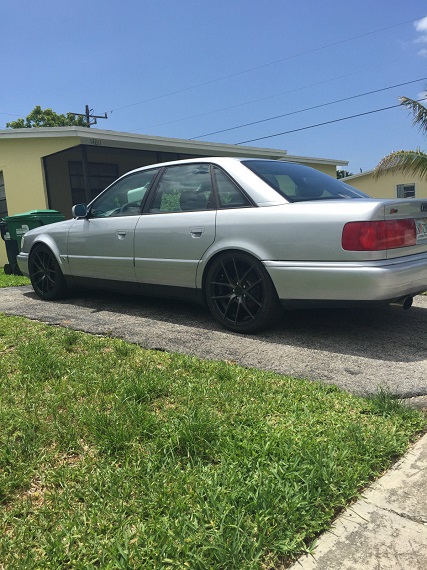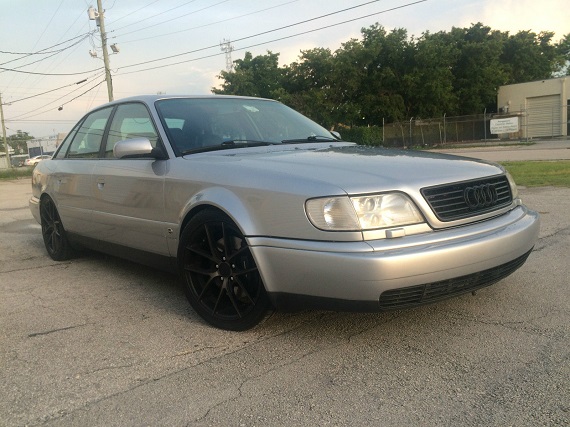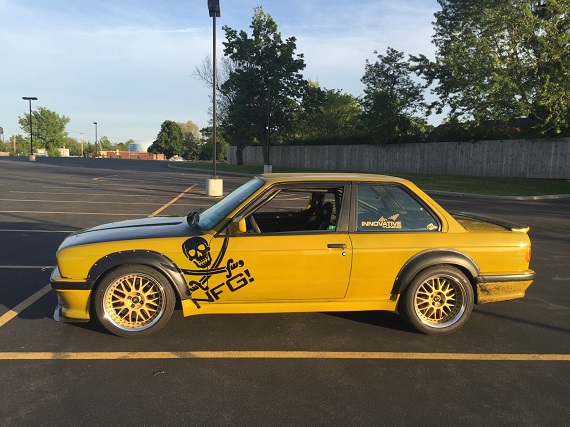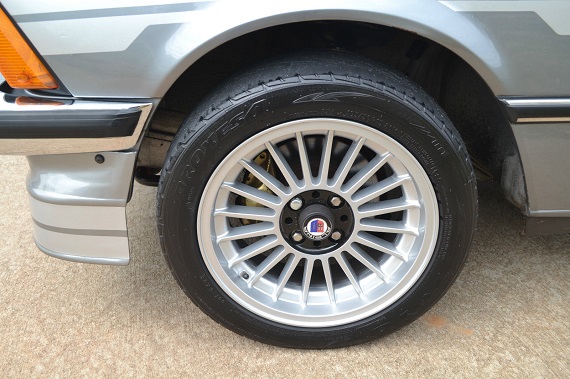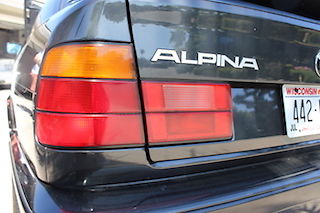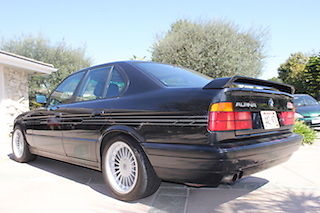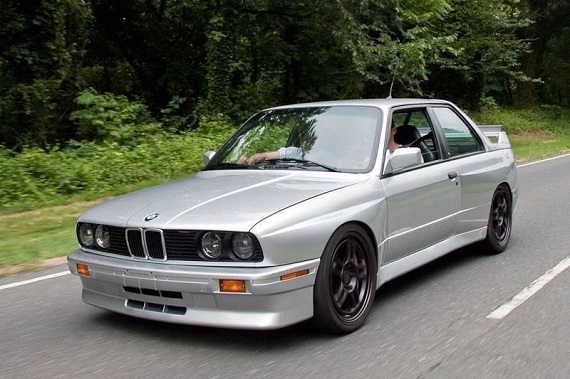The Audi C4 platform has been a perennial favorite tuning platform; just the other day in my Facebook feed a quick video popped up of an original S4 putting out over 1,000 horsepower at a staggering 11,000 RPM on a dyno. If that alone doesn’t tell you a bit about the stoutness of the turbocharged 5-cylinder mill, then perhaps the multitude of 400+ horsepower examples burbling happily along would. At their right foot the owners hold back a soundtrack of 5 barking cylinders which produce tunes that sound roughly like Pavarotti was being squeezed to death by Zeus, replete with lightning bolt cracks and flashes of fire in the sky with every shift. But properly building an AAN or other turbocharged 5-cylinder to handle really heavily increased boost will quickly double the purchase price of your budget S4/S6. So, is it a better proposition to buy one that’s done?
Category: Tuner Tuesday
This isn’t the first time I’ve written up sacrilegiously swapped cars, so it’s probably no surprise to see two Japanese-powered BMWs pop up. And in each of their own ways, neither is on the surface, at least, a car we’d typically cover. But before you judge a book by its cover, are either of these cars executed well enough to be a neat package?
CLICK FOR DETAILS: 1987 BMW 325is on eBay
Comments closedAfter a few months being listed for sale, it appears that the seller of the unique Alpina modified Euro-spec E21 320i has become a bit more realistic and the car’s asking price has dropped from $24,000 to $15,000. That seems more in line with top-of-the-market 320i sport models and makes it a much more compelling alternative to the more typical modified E30 crowd:
CLICK FOR DETAILS: 1982 BMW 320i Alpina on eBay
The below post originally appeared on our site March 24, 2015:
3 CommentsAlpina has always struck me as one of the most thorough tuners in the world. Their research and development of engines, suspension and exhaust is second only to perhaps Ruf and AMG, thanks largely to their close associations with the factory. Inside the fit and finish of the cars is perhaps even better than they came originally; beautiful details that make the cars stand apart. And visually Alpinas have always been the best looking BMWs out there in my opinion; subtle aerodynamic tweaks, beautiful wheels and striking but tasteful “go faster” stripes that distinguish Munich’s best. But even amongst Alpinas there are special models, and the E34 B10 BiTurbo is one of them. Alpina took a normal 535i and made it’s own interpretation of what the M5 could be; instead of a high-revving twin cam S38, you got two turbochargers with enough torque to embarrass those boys from Affalterbach. Alpina achieved this through a full custom build; Mahle pistons, custom oil sprayers to cool the them, stronger connecting rods, sodium-filled valves and bespoke intake and exhaust systems – but then, Alpina’s never been shy about producing it’s own items. While all Alpinas are rare, the B10 BiTurbo was fairly popular; of the 1600-odd E34s Alpina built, a full 507 of them were B10s. There are quite a few kicking around Canada, but not many are in the U.S., making this 1993 example quite rare:
CLICK FOR DETAILS: 1993 Alpina B10 BiTurbo on eBay
1 CommentThe Great Schism was a time of religious crisis for Europe; between 1378 and 1417, there were two Popes. In the early 1300s, a French-born Pope moved the head of the church from Rome to Avignon in France. This was significant for many reasons; Rome had been the spiritual home of the aptly named Roman Catholic Church since the establishment of the 5 main churches by the first Council of Nicea under Roman Emperor Constantine; the first Christian Roman Emperor and the one mostly responsible for converting Europe to Christianity. There are many more stories wrapped up in the ensuing 1,000 years of religious history, but ultimately let’s just say it was a pretty big deal to move the Chair of St. Peter. Ultimately this period, sometimes known as the period of Babylonian Captivity (itself a reference to the actual Babylonians capturing and enslaving the Jewish population about 500 years before Christ was born, if you’re into that sort of thing), resulted in a poor reputation for the Papacy and the Church, as corruption ran rampant through the higher positions in religion. So, in an attempt to correct things, in 1378 the new Pope tried to undo this by returning to Rome. This, of course, pissed the French off. So, they simply claimed they had their own Pope. And since this was during the Hundred Years War, this ultimately split Europe into religious waring factions, each aligned with a different Pope. Not to be outdone, the trading city of Pisa (yes, that leaning tower one…) also briefly claimed they also had their own Pope. Though it ultimately was resolved in 1417 by Church-wide decree that the true Pope was indeed back in Rome, it was the beginning of the end of the omnipotence of the Catholic Church in Christianity, which 100 years later would experience the Protestant Reformation, completing the religious divide of Europe.
Where am I going with this? I think the same divide exists between automobile enthusiasts; two camps, both of whom see their way of expressing enthusiasm as the right way. And, in general, at least one camp doesn’t like how the other camp does things. Ten years ago no one would probably have blinked an eye at someone modifying an E30 M3; however, ten years ago E30 M3s were still effectively throw-away performance economy cars to most people. So that someone hacked one up and threw a Dinan-stroked 5.7 liter V10 and 6-speed into one wouldn’t have raised eyebrows until they were the darling in the marketplace:
